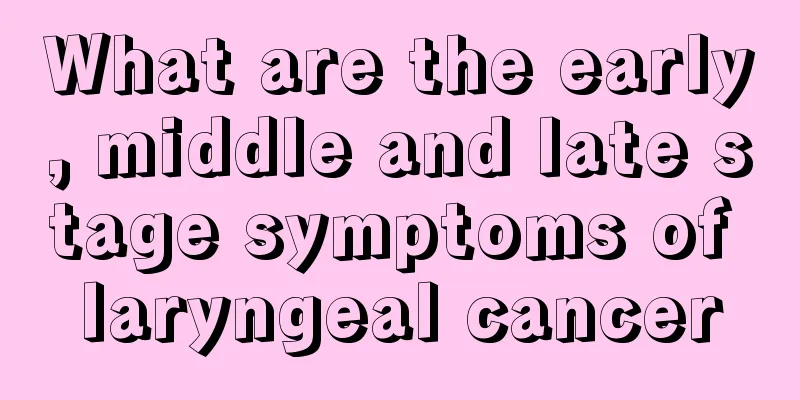Dilated cardiomyopathy

|
Dilated cardiomyopathy is a type of cardiomyopathy. This type of disease mainly affects middle-aged people. After the onset of the disease, the condition progresses slowly and the patient will experience shortness of breath and edema. It can be said that dilated cardiomyopathy is the most common type of cardiomyopathy. Therefore, there are different methods for the treatment of dilated cardiomyopathy. For middle-aged and elderly people, it is important to be alert to the occurrence of dilated cardiomyopathy. Cardiomyopathies are a heterogeneous group of myocardial diseases caused by different etiologies, resulting in abnormalities in cardiac mechanical and electrical activity, manifested as inappropriate ventricular hypertrophy or dilatation. Severe cardiomyopathy can lead to cardiovascular death or progressive heart failure. Cardiomyopathy is usually divided into primary cardiomyopathy and secondary cardiomyopathy. Primary cardiomyopathy includes dilated cardiomyopathy, hypertrophic cardiomyopathy, restrictive cardiomyopathy, arrhythmogenic right ventricular cardiomyopathy and undetermined cardiomyopathy. Secondary cardiomyopathy refers to cardiomyopathy as part of a systemic disease. It is divided into primary cardiomyopathy and secondary cardiomyopathy. 1. Primary cardiomyopathy Primary cardiomyopathy refers to a type of heart disease in which the cause of the disease is not yet clear, resulting in myocardial damage that causes heart enlargement and eventually develops into heart failure. The cardiomyopathy generally refers to primary cardiomyopathy. According to etiology and pathology, it is divided into three types: (1) Dilated cardiomyopathy is characterized by ventricular dilation. Congestive heart failure often occurs, so it is also called congestive cardiomyopathy. The most common, accounting for 70% to 80% of cardiomyopathy. (2) Hypertrophic cardiomyopathy is characterized by ventricular hypertrophy. Since many patients have asymmetric hypertrophy of the ventricular septum, which causes ventricular outflow tract obstruction, it was previously called obstructive cardiomyopathy. In fact, some patients have myocardial hypertrophy but do not suffer from obstruction. This type accounts for 10% to 20%. (3) Restrictive cardiomyopathy is characterized by endomyocardial scarring, and the ventricular cavity may be occluded. In the past, myocardial scarring without hypertrophy was called restrictive cardiomyopathy, and ventricular cavity occlusion due to fibrosis and mural thrombus was called occlusive cardiomyopathy. Now these two conditions are combined into restrictive cardiomyopathy. Patients who cannot be classified into the above categories, have mild abnormalities, and progress or do not progress to significant cardiomyopathy are classified as "unclassified cardiomyopathy" or "occult cardiomyopathy." 2. Secondary cardiomyopathy Secondary cardiomyopathy, also known as "specific cardiomyopathy", refers to myocardial changes caused by known causes or occurring after other diseases. Most of them are middle-aged people. The onset is usually slow, sometimes lasting more than 10 years. The main symptoms are congestive heart failure, among which shortness of breath and edema are the most common. Initially, shortness of breath occurs after labor or fatigue, and later shortness of breath also occurs during light activity or rest, or there are paroxysmal dyspnea at night. Patients often feel fatigued. Physical examination shows an increased heart rate, the apex beat shifts to the lower left, there may be a lifting beat, the boundary of cardiac dullness expands to the left, the third or fourth sound can often be heard, and the heart rate presents a gallop rhythm when fast. Due to the enlargement of the heart chamber, there may be a systolic blowing murmur caused by relative mitral or tricuspid regurgitation, which will be alleviated as heart function improves. In late-stage cases, blood pressure is low, pulse pressure is small, and diastolic blood pressure may be slightly elevated when heart failure occurs. The presence of pulse alternans suggests left heart failure. The pulse is often weak. There may be rales in both lungs in heart failure. When right heart failure occurs, the liver enlarges and edema starts from the lower limbs. In the late stage, there may be pleural and abdominal effusion, and various arrhythmias may occur. High-degree atrioventricular block, ventricular fibrillation, and sinoatrial block can lead to Adams-Stokes syndrome, which is one of the causes of death. In addition, there may be embolism in the brain, kidneys, lungs, etc. |
<<: There is a white pustule in the mouth
>>: Can people with chickenpox eat soy sauce?
Recommend
What to do if your lips are too thin?
Many people feel inferior because of thin lips, w...
Red rash on face after fever
The phenomenon of rash on the face after a fever ...
Will colon cancer recur after five years?
Will colon cancer recur after five years? Relevan...
Will soaking your feet in mugwort cause internal heat?
Around the Dragon Boat Festival, many people will...
The carcinogens in burnt meat cannot be ignored!
Everyone has cancer cells in their body, but not ...
What are some fruits that are not cold in nature?
There are many kinds of fruits, and different fru...
Is there a big difference between glucose and white sugar?
Carbohydrates are essential substances for people...
What to do if pimples appear on face after eating shrimp
Shrimp is a food high in protein. Many people lik...
Is late stage breast cancer scary?
The middle and late stages of breast cancer are m...
The harm of dental disease may increase the risk of breast cancer
In daily life, breast cancer is a very common dis...
What are the early symptoms of prostate cancer
Prostate cancer is a common male disease. This di...
How to use a tea towel
The culture of drinking tea is profound and has t...
Can surgery be performed for presbyopia
After reaching middle age or old age, people'...
Reasons why pituitary tumors are easily misdiagnosed
Because the clinical symptoms of pituitary tumors...
What are the benefits of maternity insurance
In our daily work, many companies provide five in...









